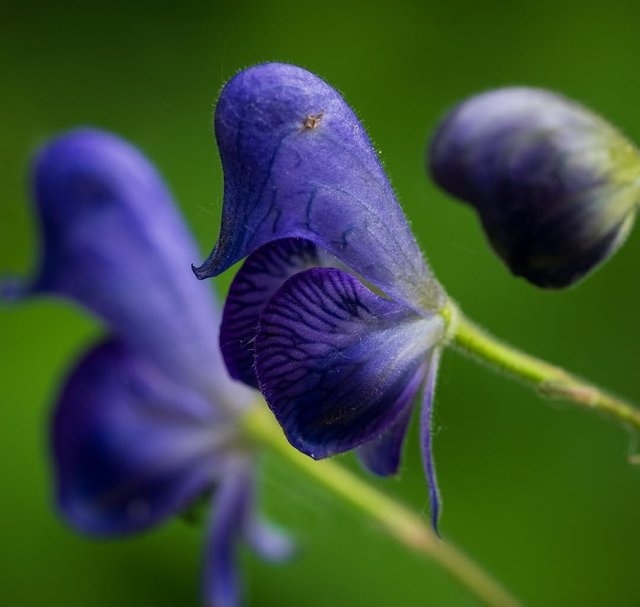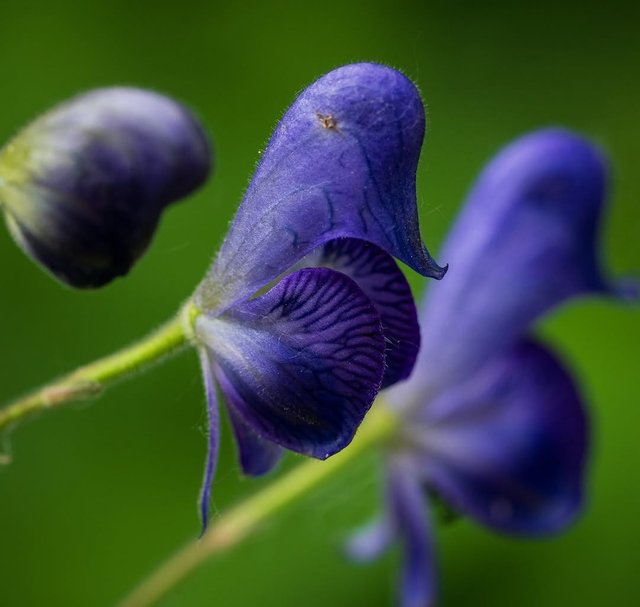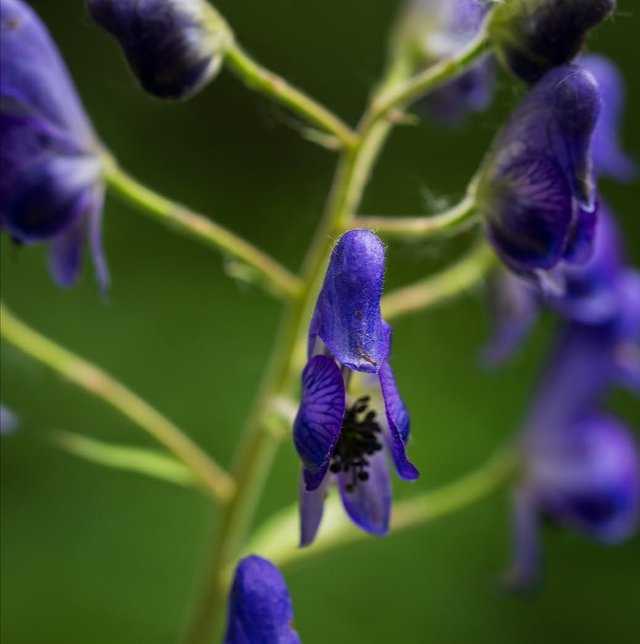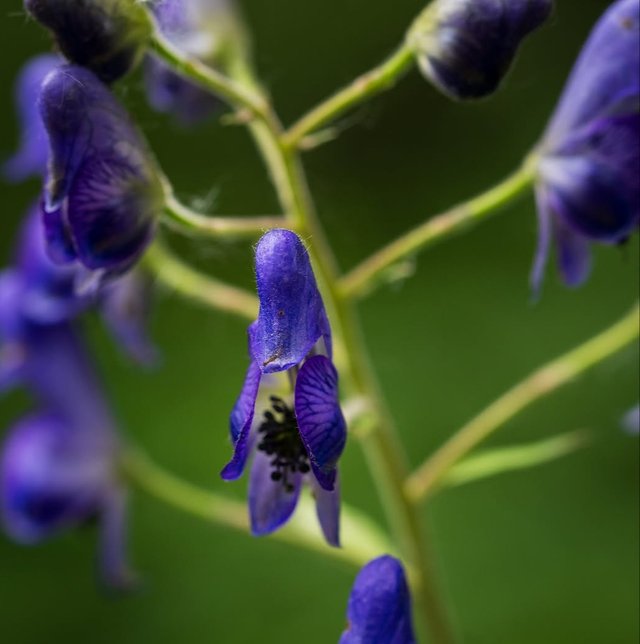Beautiful Colour European Monkshood Flower
European Monkshood – The Enigmatic Beauty with a Dark Past
European Monkshood, also known as Wolf’s Bane or Blue Rocket, is one of the most strikingly beautiful yet notoriously toxic plants native to the mountainous regions of Europe. With its deep violet-blue, hood-shaped flowers and tall, graceful stems, it can easily be mistaken for a harmless garden ornamental. But behind this captivating exterior lies a potent legacy of myth, medicine, and deadly reputation.
Botanical Profile
Family: Ranunculaceae
Genus: Aconitum
Height: Typically 1–1.5 meters tall
Flowering Season: Mid to late summer
Native Range: Central and Western Europe, especially alpine meadows and moist, cool woodlands
The plant gets its name “monkshood” from the unique shape of its upper sepal, which resembles the hood worn by medieval monks. Its foliage is dark green, deeply lobed, and lush, forming a dense base from which tall spires of flowers emerge.
Toxicity and Chemical Composition
European Monkshood is infamous for containing aconitine and related alkaloids—extremely potent neurotoxins that affect the nervous system. Even small amounts, when ingested or absorbed through broken skin, can cause severe symptoms such as numbness, tingling, vomiting, respiratory failure, and even death. Historically, it was used in both medicine and poisoning:
In warfare: Ancient warriors are said to have tipped their arrows with monkshood poison.
In folklore: Wolf’s Bane was believed to ward off werewolves and evil spirits.
In traditional medicine: It was sometimes used in minute doses to relieve pain or treat fevers—though this was a dangerous practice, now abandoned in modern medicine.
Cultivation and Garden Use
Despite its dangers, Aconitum napellus is a popular plant among experienced gardeners due to its unique beauty and ability to thrive in shady or partially shaded areas. It prefers:
Soil: Moist, rich, well-drained soil
Light: Partial shade, though it can tolerate full sun in cooler climates
Care: Minimal maintenance once established, but gloves should always be worn when handling the plant
Because of its toxicity, it should never be planted where children or pets might accidentally touch or ingest it.
Thanks For Reading
Device Information
| Device | Redmi Note 10 Pro |
|---|---|
| Lens | 64 mp |
| Location | Bangladesh |




